8 content marketing trends to help you dominate 2017
With 2017 fast approaching, companies have already started setting their content marketing budgets. The market that was once dominated by those who could produce the largest volume of content is now replaced by diversity of content formats and the ability to engage the audience across multiple platforms.
Increase your returns on investment and dominate the market by leveraging these eight content marketing trends for 2017.

#1. Mobile – The buck for a content marketer doesn’t stop at making a website responsive and mobile-friendly. The gist of content marketing is to deliver content to the audience, everywhere that they are. With people spending more time on their smartphones than ever before, your complete online strategy, including content, should be focussed on an increasingly dominant mobile marketplace.
Is your content easy to read and navigate on every mobile device? If not, your audience won’t switch screens to merely consume a piece of great content. They’ll simply move to the next option.
Failure to enhance the customer experience makes your business less relevant.
#2. Interactive content – The content that we read, watch or listen consumes time and attention. Today’s average attention span has hit an all-time low. Marketers need to find creative ways to make the content interesting. The best way that a brand can capture the attention of their audience is by creating interactive content. According to a research conducted by Content Marketing Institute, “Eighty-one percent marketers agree that interactive content grabs more attention than static content.”
BuzzFeed’s 'Which City Should You Live In' quiz has been one of their most popular content pieces.
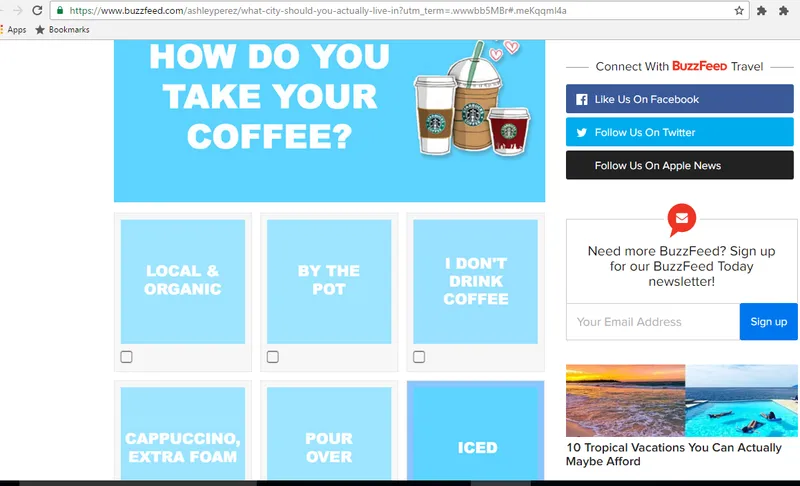
BBC came up with a killer infographic providing personalised results based on your birth date and height.
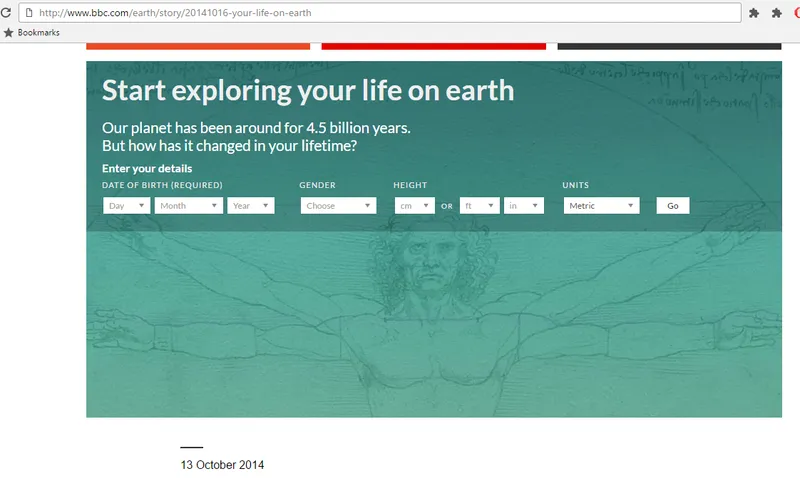
Your audience wants to feel involved while consuming content. Brands are implementing interactive content by means of calculators, quizzes, contests, assessments and configurators.
#3. Native advertising – Joe Pulizzi, founder of Content Marketing Institute, defines native advertising as “a form of advertising that doesn’t disrupt the user experience and offers helpful information in a format similar to the other content on the site so users engage with it more than they would with, say, a banner ad.”
The use of Adblock tools is soaring as the audience prefers to have a smooth online user experience. This is where native advertising comes into action. It allows brands to use storytelling skills to create quality content that can connect with the new audience without disrupting the natural user experience.
The New York Times cited native advertising as a reason for surviving in the Adblock-heavy digital environment. Companies like Buzzfeed are built on the platform of native advertising.
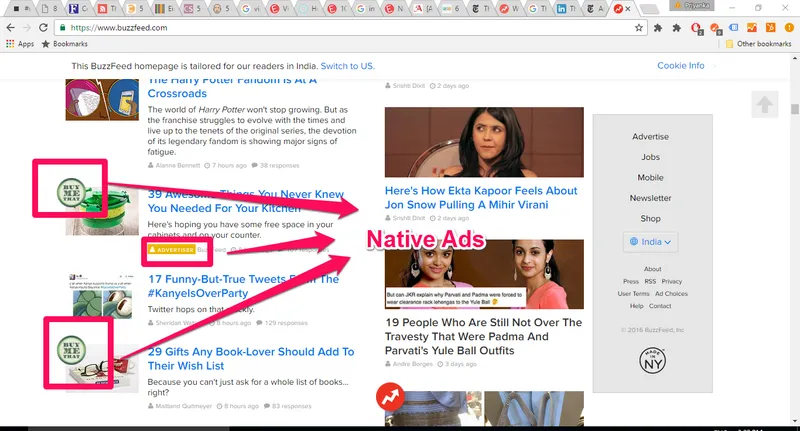
Based on a study conducted by Business Insider, the native display ad revenue of USA is expected to reach $21 million in 2017 while 2016 has seen around $16.8 billion.
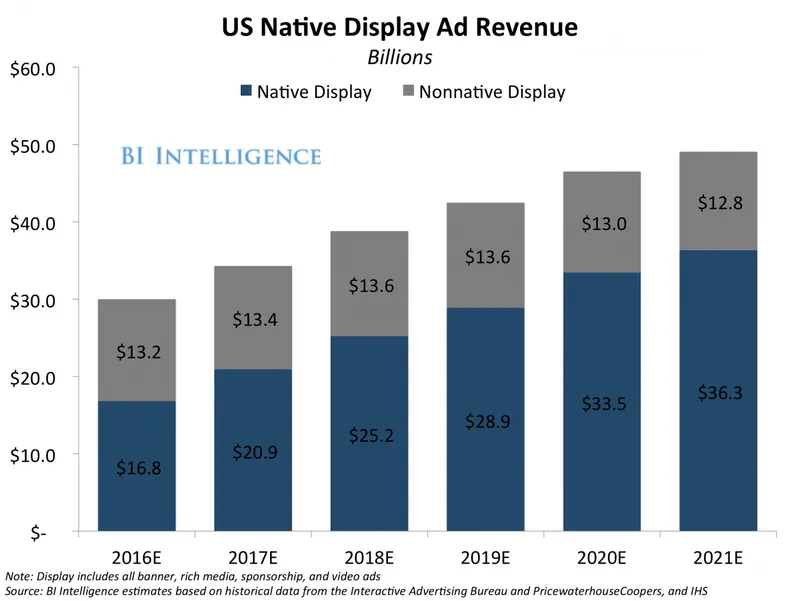
#4. Influencer marketing – According to a case study conducted by TapInfluence and Nielsen Cataline Solutions, influencer marketing leads to 11X the ROI of traditional advertising annually. In the past year, influencer marketing has skyrocketed due to its ability to help brands reach a newer audience. Also, a trusted influencer adds credibility to your brand and makes it easier to build trust with their followers.
The initial part of the strategy is to market to the right influencer and the secondary part is to drive a campaign that raises greater awareness among the followers of their community.
The Las Vegas Convention and Visitors Authority hired DJ Khaled, the “King of Snapchat” to show to his six million fans the exciting places in the city. The takeover went on for two days and promoted @VisitLasVegas, Las Vegas’s new Snapchat account. In mere two days the channel gathered 4,00,000 views and 25,000 followers. They chose DJ Khaled owing to his unabashed authenticity and his young audience following of 21-30 year olds that Las Vegas wanted to reach out to.

#5. Live streaming videos – Whether you’re a startup, an entrepreneur who has just started or a consultant, live streaming videos offers a chance to interact with your audience in a much more authentic and relatable way.
Live streaming allows creation of content with a click of button, with no additional costs associated with video production. Its popularity can be credited to the unique ability of the content being unfiltered and unedited. The three key results achieved from live-streaming are higher conversion, engagement and awareness among the viewers.
Seeing the content as a live video gives the viewer a greater sense of realism and enables brands to iterate their message based on the viewer engagement.
Benefit Cosmetics hosts a series called 'Tipsy Tricks' every Thursday at 4.15 pm PST on Facebook Live. The host asks the audience about the products they’d like them to use to create a makeup look. They allow viewers to submit their ideas through Snapchat and Facebook Live to help the hosts brainstorm on the future topic to cover.


#6. Purpose-driven marketing – Content Marketing Institute defines purpose-driven content marketing as “a way for a business or brand to bond with a target audience based on their shared needs and interests – including the interest in supporting a worthy cause.” While most businesses are aware of the importance of “giving back”, most haven’t figured out a way of creating content that serve the purpose of engaging the audience around a cause and driving them to participate.
It is vital to create the right strategy and execute it in an original and organic way that benefits all parties involved.
On-demand taxi provider Uber’s Mothers Against Drunk Driving Campaign is an excellent example. For the Fourth of July weekend, they donated $1 for every ride taken between 6 am on July 4 to 6 am on July 5 for customers who redeemed a unique discount code.
#7. Newsletters – Newsletters are an important element of closed-loop marketing strategies allowing you to produce content, reach out to the audience in an organic way and measure the results. They are a powerful way to nurture an already existing lead until it converts to a customer.
Make your content relevant, interesting and fresh and deliver it regularly to the readers. Since your audience reads the newsletter through multiple devices ensure that it looks perfect on every device.
One of my personal favourites is TheRodinHoods newsletter. Co-founder Asha Chaudhry adds amazing flavor to every newsletter that reaches my inbox every Friday evening. Here’s a screenshot of a small section.
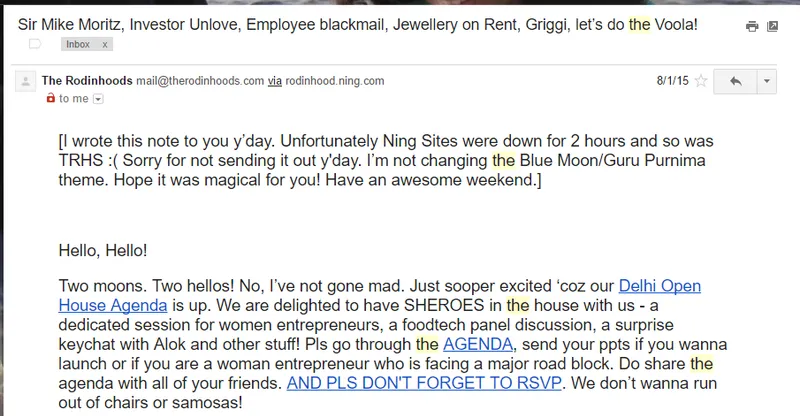
When done correctly, email marketing becomes the most effective tool to drive customers to make a purchase.
#8. Virtual reality – The buzz created around virtual reality makes it the most hyped topic in the tech domain. From hotels offering a tangible experience, to test driving cars, VR seems to be the next big thing in content marketing in 2017. Termed as the empathy machine, VR lets your customers experience your brand rather than making them listen or read what you have to say.
For example, Jaguar, the official car for Wimbledon, has created a virtual experience for fans to feel what it would be like to step into the historical court and be the current Wimbledon Champion Andy Murray.

A study conducted by GreenLight VR found that “Sixty-two percent respondents feel more engaged with a brand that gives a VR experience and 53 percent say that they are more likely to make a purchase from a brand that uses a VR experience than from one that doesn’t.”
While more expensive that traditional media, VR involves the reader in the experience than merely selling a story. Brands in 2017 need to be on a lookout for ways to engage their audience with a unique VR experience.
2017, here we come.
With the brilliant developments happening in the content marketing industry, businesses must evolve their strategies accordingly. Also, remember that content marketing is a wide industry. Rather than trying to adopt all the new trends it is better to excel in a few







